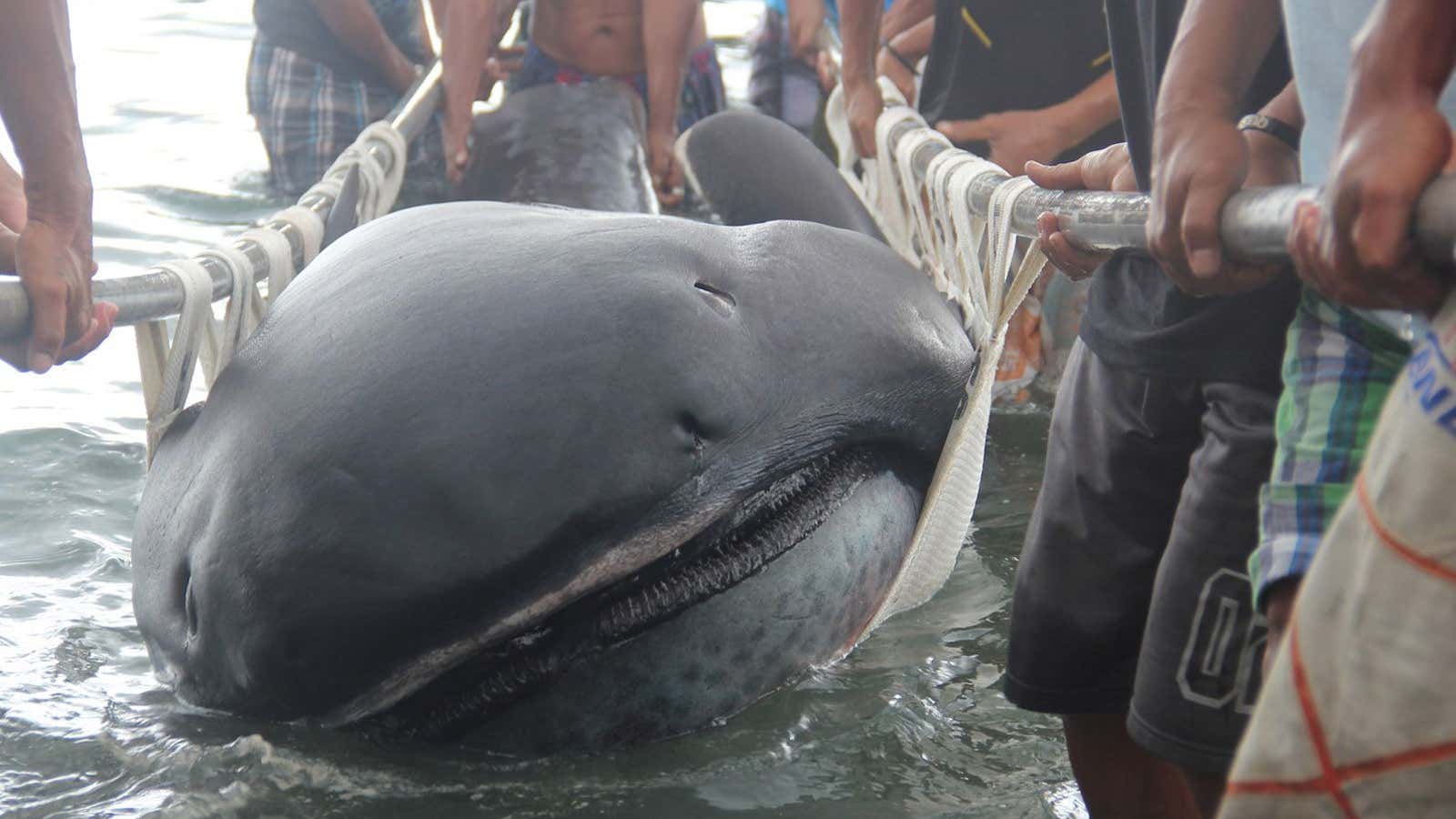The recent spate of strange shark sightings just keeps going. Today, a rubbery-lipped, 15-ft. (4.5 m) beastie washed up on a beach in the Philippines. The creature turned out to be a megamouth shark—a species so rare that Christopher Bird, a marine zoologist and blogger, has estimated it’s only the 60th confirmed human encounter with one.
Before 1976, no one had any idea megamouths existed (officially, at least). It was in Hawaii that year that a 14.6-footer gulped down a submerged parachute filled with sand, which a US Navy ship was using as an anchor. Scientists were as baffled as the crewmen: though loosely related to two other, mostly vegetarian, shark behemoths—the whale shark and the basking shark—the creature belonged to a previously unrecognized family, genus, and species.
Its family tree has something to do with its comically gaping maw. Like whale and basking sharks, megamouths are filter feeders; their big mouths helps them suck up all the plankton and jellyfish they need. As Bird notes, some scientists hypothesize the megamouth’s mouth, which is both reflective and lined with a bioluminescent patch, lures the animal’s prey.
The rarity of sightings is one thing that still confounds Bird and other marine scientists. It may be that megamouths hang out in areas humans don’t frequent—the deeper swaths of the sea, perhaps, or areas where people don’t fish. While the majority of encounters have been in the Philippines, Japan, and Taiwan, the sharks have turned up everywhere from Catalina Island, California, to Senegal.
Most of the encounters resulted from fishing boats accidentally catching the megamouths in nets. In a 2008 paper (pdf, p.71), Kazuhiro Nakaya—an ichthyologist and one of the only people on the planet to have dissected a megamouth—noted a surge in reports of the strange shark since the early 2000s, which he attributed to growing interest and public attention.
Yet another enduring enigma is that almost none of the megamouths observed to date have been medium-sized, according to Bird. To date, most have either been mature—males reach about 13 ft., females about 16 ft.—or juveniles smaller than 6 ft. (The largest megamouth ever confirmed washed up in Taiwan measuring nearly 19 ft.)
“The mystery surrounding it reminds us how much we still have to learn about the natural world,” Bird writes, adding that maybe human ignorance about megamouth is a good thing. “It prevents information on its distribution getting into the hands of those who would happily exploit this creature for some large fish steaks or megamouth burgers,” he says.
You might also like:
